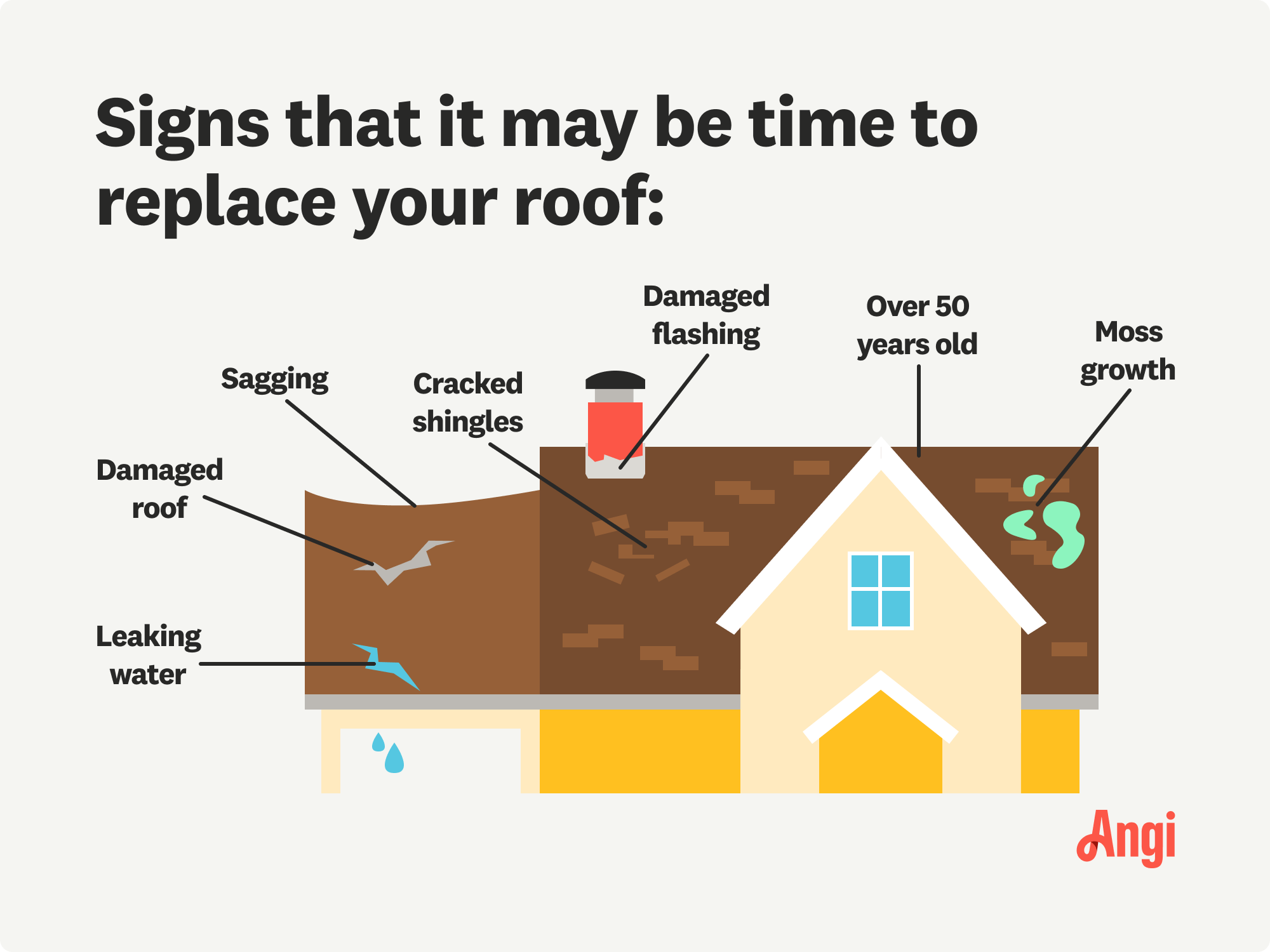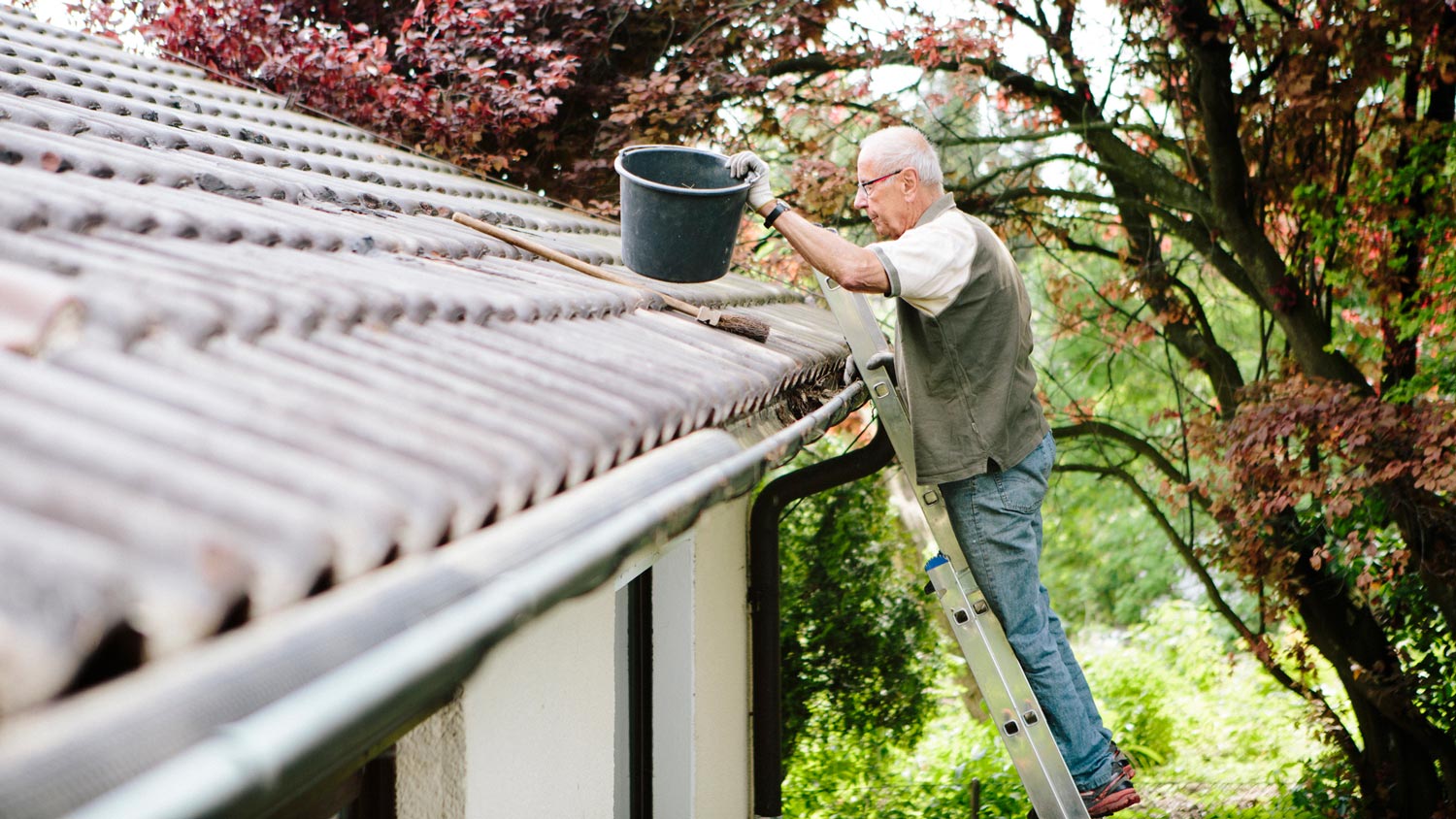11 Roof Maintenance Tips for Homeowners
Here’s your top-to-bottom roof maintenance checklist


Your roof should be inspected and cleaned several times per year.
While inspecting your roof can be a DIY event, roof pros can help if you don't like getting on a ladder.
Taking care of little problems that you spot today can save your roof.
Shingle problems can be signs of mold, moss, rot, and water damage.
Your roof is one of the hardest-working parts of your home and a major investment, too. Keeping your roof maintained will help keep your home protected from the elements and prevent costly damage for years to come. Learn how to maintain your roof with these 11 roof maintenance tips.
1. Remove Debris
Don't allow debris to sit on top of your roof. Branches, leaves, and other debris that accumulate on your roof invite mold, moss, and moisture that can prematurely age your roof. Elements can get under your roof shingles to cause destructive rot throughout your home.
There are some tips to know about debris clearing.
Never do it alone. Always have a spotter when you climb up on your roof to clear away debris.
An extendable ladder is helpful to safely access the top of your roof. It's also smart to do roof maintenance on clear, sunny days when your roof is dry. This will help prevent slips and improve visibility. Take the opportunity to look for damage while you're up on your roof clearing debris.
Never go up on your roof if you feel unwell, unsteady, or unprepared. There are plenty of local roof repair and maintenance companies in your area that can handle seasonal roof care and inspections.
You can also hire a local roof cleaner to do the job if you’re not comfortable doing it yourself.
2. Inspect Your Shingles
After clearing debris off the roof, take stock of your shingles. They should sit flat against the roof and have a uniform appearance. Look for missing shingles or ones that are loose, lifted, curling, peeling, or cracking. Replace damaged or missing shingles immediately to prevent damage to the roof’s underlying layers.
If your roof is still in the early stage of its life span, and you notice a few shingles are peeling and curling, you may have a ventilation problem. A roofer can confirm if there’s a venting issue and offer a solution. But if you're seeing excessive peeling, curling, and lifting in shingles throughout your roof, it's possible that your roof has simply reached the end of its life span.
It may be time to bring in a local roofing pro to confirm that it's time to move on from trying to extend the life span of your roof to picking out a new roofing option.

3. Ensure Soffits, Fascia, Gutters, and Downspouts Are in Good Condition

All of these components of your roof should be included in any plan for roof maintenance. First, make sure you're scooping debris from gutters and downspouts when you do your general debris removal from your roof.
Next, use a soft-bristle brush to wipe away any dirt or grime discovered on your gutters and downspouts. You can also consider washing the areas with your garden hose.
Next, inspect for any missing caulk, peeling paint, cracks, holes, or signs of rotting. Look for any missing sections of gutter that need to be replaced. Missing or broken gutter hardware can also lead to leaks. Make all replacements and repairs immediately.
Always be conscious of your body's positioning while you're inspecting or cleaning roof components. Leaning your body on your gutters while cleaning can actually damage gutters. This is also an easy way to fall off your ladder. If you’re not comfortable doing it yourself, hire a local gutter cleaner to do the job for you.
Consider Gutter Screens
If your gutters are filled with debris, consider installing gutter screens or covers that will drastically shorten the amount of time you need to spend cleaning out your gutters seasonally.
4. Look at Chimneys, Skylights, and Vent Openings
Once your main roof sections have been looked at, it's time to move on to large accessories. Start by closing off the fireplace. Next, you'll want to clear away a soot-like substance called creosote that forms on chimneys using a simple chimney brush. You should also inspect the chimney for cracked bricks, missing bricks, cracked mortar, and any other signs of irregularity.
Chimneys should be sealed with water-repellent products regularly.
Finally, do a roundup of all vent outlets and skylights. You want to look for any signs of water damage or mold.
5. Check Caulk and Flashing
Roof flashing is material, most often steel, that’s installed to help water drain off your roof. It’s usually found around chimneys, skylights, vents, and other fixtures to direct water away from roof areas that are especially vulnerable to water damage. Although flashing is a very durable material, it’s installed on the roof using caulk, which can deteriorate over time.
Inspect your flashing for signs of corrosion or rust, and check if your caulk is still in good condition. Flashing caulk should be replaced every five years or so, but if it has begun to deteriorate, you may need to replace it sooner to prevent water damage.
6. Remove Moss and Algae
Patches of algae on your roof may be unsightly, but they aren’t usually damaging. Moss growth on the roof, however, can be an indication that there’s a moisture problem. Moss can cause your roof to deteriorate, so it’s important to address it early on.
First, apply a cleaning solution designed to remove moss from roofs. Once the moss is gone, have a roofer apply zinc- or copper-coated strips to your roof to prevent it from coming back.
7. Prune Nearby Trees
Trees close to your roof can lead to impact damage from falling branches. Trimming overhanging branches will prevent them from falling and damaging your roof during a storm. Trees also provide a handy bridge for pests like rodents to access your roof and enter your home, so it’s a good idea to prune branches back to encourage pests to move on.
Keeping your trees trimmed can also increase the amount of sunshine your roof gets. This can prevent moss and algae growth and speed up how long your roof takes to dry out after a rainstorm. Hire a local tree pruning company for the best results.
8. Prevent Ice Dams
In areas that see snow or ice, ice dams can cause a lot of damage over the winter. Ice dams form when snow or ice partially melts, and the runoff refreezes as it drains off your roof, often under a layer of still-frozen snow or ice. The refrozen runoff can clog your gutters, preventing additional water from draining properly. Water is then forced under your shingles and can damage your roof and walls.
Prevent ice dams by ensuring your attic is properly ventilated and insulated. A warm attic can cause the bottom layer of snow or ice on the roof to melt too quickly, leading to ice dams. You can also install roof heat cables to keep water from refreezing in your gutters and downspouts.
9. Seal Your Roof
Your roof is your home’s best defense against water intrusion, but over time, it may lose its ability to keep water out effectively. Roof sealant is a protective coating applied to the roof’s surface that helps protect it from water and UV exposure. Sealing your roof can help prevent expensive water damage and extend your roof’s life. It’s best to hire a local roof sealing company to do this job
10. Check Your Attic
Potential roof problems aren’t always visible from the outside. Take a look around your attic for any signs of water damage, mold, or warped or discolored spots on the underside of the roof. Anywhere light is shining through the roof is another sure sign your roof needs repair—call a roofer if you see anything of concern in your attic before a small problem gets much worse.
11. Get an Annual Inspection
Having your roof inspected yearly is the best way to ensure it stays in top condition. A roofing professional will know exactly what to look for to check for potential problems and will be able to make any necessary repairs. A roof inspection costs about $230 on average, which is a small price to pay compared to expensive large repairs or even roof replacement.
A neglected roof is likely to develop costly damage, so staying ahead of problems by hiring a roof inspector in addition to regular maintenance will protect your home and your bank account.





- 9 Warning Signs You Need a New Roof
- 9 Ways to Help Your Roof Last Longer
- 12 Best Roof Maintenance Tips Every Homeowner Should Know
- 15 Common Roof Issues You Shouldn’t Ignore and How They’re Fixed
- Protect Your Roof From the Snow With These Roof Winterizing Tips
- 8 Signs of Storm Damage to a Roof and What to Do About It
- 30 Common Roofing Mistakes You Need to Know
- How to Fix a Leaking Roof [2024 Guide]
- What to Do If You’ve Had Wind Damage to Your Roof
- Should You Repair or Replace Your Roof?


.png?impolicy=thumbnail)













